Matador Network's Blog, page 839
June 15, 2020
Ruby Bridges Selena Gomez Instagram
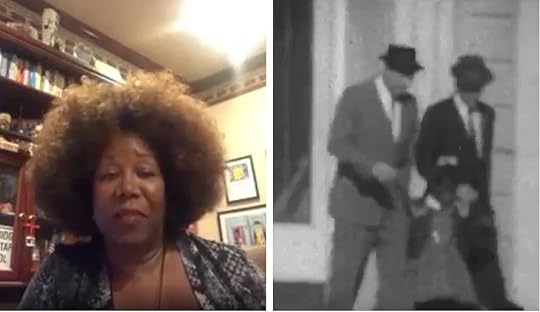
Ruby Bridges, the first Black student to integrate into an all-white elementary school in the South, took over Selena Gomez’s Instagram account on Sunday to share some never-seen-before footage of this historic day. In 1960, Bridges enrolled at an all-white school in New Orleans and was famously escorted into the school by US Marshals as protesters stood outside.
View this post on Instagram
A post shared by Selena Gomez (@selenagomez) on Jun 14, 2020 at 9:06am PDT
During the Instagram takeover, Bridges introduced a series of clips from a documentary that showed her first day of first grade at William Frantz Elementary in New Orleans, followed by an excerpt from the documentary, The Children Were Watching, which shows the violence the Gabriel family faced as Daisy Gabriel, a Latina mother, tried to bring her daughter to school the same day Bridges integrated the school. The division and anger displayed is heart-wrenching.
View this post on Instagram
Map of all travel restrictions 2020

Keeping track of which countries have open borders right now, who they’re allowing to visit, and under which circumstances is no easy feat. With national policies changing by the day, it’s almost impossible to know where and when we’re allowed to travel. To make the process of planning a trip at this very unusual time, the International Air Transport Association (IATA) is attempting to make it easier on prospective travelers.
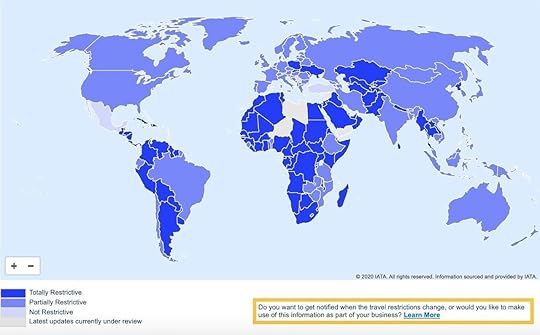
Photo: IATA
The IATA created an interactive map of the world, which allows you to click on any country and see its current tourism policy. The map is updated in real time in accordance with the rapidly evolving international response to the COVID-19 pandemic. IATA partnered with airlines and government agencies worldwide to create the map.
Clicking on a country will reveal any border restrictions and to whom they apply. Clicking on the United States, for example, opens a window that shows that non-US nationals or residents who have traveled to Austria, Belgium, Brazil, People’s Republic of China, Czechia, Denmark, and 25 more nations in the past 14 days are not allowed to enter the US. The pop-up window also details a list of exemptions and quarantine measures. Clicking on the UK reveals that passengers are subject to self-isolation for 14 days and must complete a “Passenger Public Health Locator Form” before departure and present it at customs.
If you’re considering traveling abroad in the next few months, check this map regularly for updates. 
More like thisTravelThe days of US passport dominance may be over
The post This interactive map shows where you can travel this summer, and where you can’t appeared first on Matador Network.

Savannah to pay tech workers to move

If a few months of being stuck in the city has had you thinking about relocating to a less densely populated area, Savannah, GA, may be the place for you. The Savannah Economic Development Authority (SEDA) just announced a workforce incentive program, which will reimburse qualified tech workers up to $2,000 to relocate to Savannah, GA. The program is intended to boost the local tech scene by taking advantage of the COVID-19 situation that promotes remote work.
According to SEDA President and CEO Trip Tollison, “This incentive is a great way for technology workers that can work remotely to think about relocating to Savannah as a permanent location. We know once these technology workers arrive, Savannah — and its diverse offerings and high quality of life — will sell itself.”
Applicants must have at least three years of experience, relocate to Chatham County with a minimum one-year lease or purchase property, and must have lived in the county for 30 days before applying to the program. The $2,000 is meant to help cover moving expenses.
Jen Bonnet, the vice president of innovation and entrepreneurship at SEDA, told Smart Cities Dive, “I don’t want you to move here for the money, I want you to move here because you love it. I’m counting on some people reconsidering living in very, very large metropolitan areas and hoping that an area like Savannah — with the very high quality of life, lower cost of living, an art scene and walkable streets, bikeable streets, a really cool history — will attract some of these workers.”
SEDA will accept up to 50 workers to the program through the end of 2020. 
More like thisLifestylePro tips for working from home, from the Matador staff who do it year-round
The post Get paid $2,000 to move to and work in Savannah, GA appeared first on Matador Network.

Drones delivering library books
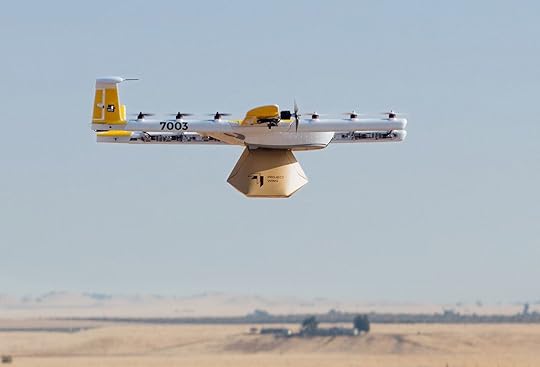
COVID-19 has forced businesses and services around the country to get creative, especially when it comes to bringing products to customers who can no longer simply walk into a store. The Montgomery County Public School system in Virginia, for example, previously got creative with its school buses, using them to deliver daily meals and reading materials to students’ homes. And the school system hasn’t stopped innovating just because the school year is over. Since the school system is located in Christiansburg, which is also the home of Google’s drone delivery division, Wing, the school’s deliveries are now taking to the air.
Blacksburg Middle School librarian Kelly Passek petitioned Wing to send students library books via drone. Keith Heyde, Wing’s Virginia head of operations, was enthusiastic about the idea. “My mom’s a librarian, “ he told WDBJ7, “so reading has been very important for me personally. If we can provide a little bit of extra access during the summer and challenges during COVID-19, that’s a win.”
The delivery drones are a mix of airplanes and quadcopters, exceed speeds of 70 miles per hour, and lower deliveries down on a cable from above. Last week, the first round of 18 drone-delivered books went out.
Christiansburg residents are eligible for drone delivery if their home has a suitable “delivery zone” where the package can be safely lowered. Although the drones are autonomous and unmanned, they are overseen remotely by pilots.
Passek told WDBJ7, “Drone delivery is allowing us a way to keep contact with our students and to keep providing them with access to our library resources, which are so necessary for them. I am thrilled that so many students have taken advantage already and really hope that they can continue on all summer long requesting books by drone.” 
More like thisBooksThe 7 coolest libraries around the world
The post This school district is delivering library books to students via drone appeared first on Matador Network.

Europe probably not reopening to US
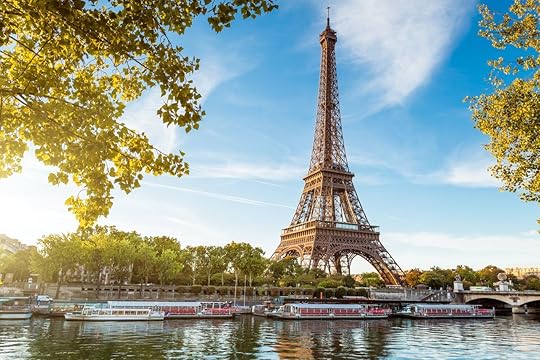
Europe might be gradually lifting its borders this summer, but that doesn’t mean everyone will be welcome.
After being given the green light by the European Commission, the Schengen countries and the Schengen-associated states of the European Union are allowed to lift internal border restrictions starting on June 15, with plans to allow travelers from beyond the EU on July 1. External EU borders will only be lifted, however, for residents of countries deemed safe, meaning the United States will most likely still be barred from entry.
The European Commission published guidelines to help EU members determine who will be allowed to visit and stated, “The restriction should be lifted for countries selected together by Member States, based on a set of principles and objective criteria including the health situation, the ability to apply containment measures during travel, and reciprocity considerations, taking into account data from relevant sources such as ECDC and WHO.”
Granit Sadiku, a researcher at Schengen Visa Info, isn’t too optimistic that US citizens will be among the first welcomed back to Europe. He told Forbes, “Given the U.S. currently has an average of about 345 active cases of coronavirus infections per 100,000 citizens, the chances are high that travelers from the U.S. will only be able to travel to the Schengen zone at a later date.”
Exceptions to this prediction include Greece and Portugal, which will soon reopen to travelers from the US. However, while the two nations are part of the Schengen zone, US travelers will not be allowed to cross their borders to other Schengen countries until the European Commission allows it.
The EU wants its members to regularly update the list of countries for whom travel is allowed, so while you shouldn’t book your flight for July 1, there’s still hope for later in the summer. 
More like thisFood + DrinkThe TSA has a new rule for snacks in carry-ons. Here’s why.
The post Europe is reopening, but probably not to Americans appeared first on Matador Network.

Coolest pedestrian streets

Reclaiming streets for pedestrians is in vogue right now. Thanks to the COVID-19 pandemic and restrictive social distancing measures, cities around the United States are looking to expand sidewalks, close roads to traffic, and give restaurants more space to seat patrons. Seattle has already closed 20 miles of streets to traffic to make more room for outdoor dining and activities, and cities in California, like Berkeley, are following suit.
Some cities around the world, however, sported world-class pedestrian streets long before they were cool. Sometimes tucked away in alleyways surrounded by urban sprawl, and sometimes serving as the main thoroughfare, walking streets offer a glimpse into a city’s past, and its unique character. From Los Angeles to Beijing, these beautiful, memorable promenades transport you back to a simpler time when you didn’t have to look both ways to cross the road.
1. Buchanan Street — Glasgow, Scotland
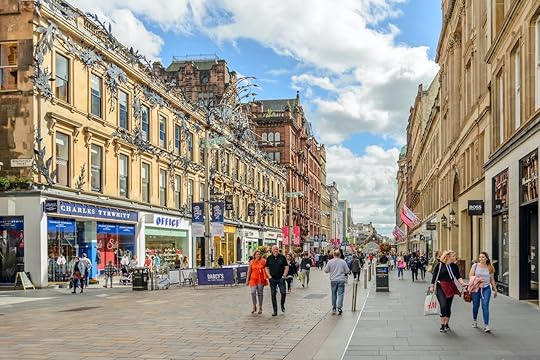
Photo: cornfield/Shutterstock
There’s a reason Buchanan Street was voted Scotland’s favorite street in 2003, and continues to receive recognition today. Glasgow’s most impressive promenade, it’s lined with Victorian and Edwardian commercial buildings, and is considered one of the best preserved streets in Scotland for 19th-century architecture. Vehicle-free since 1978, the street is home to a monthly farmers market and regular street theater performances, as well as boutique shops, museum, library, design center, and the Glasgow Royal Concert Hall. More than just a commercial and cultural center, Buchanan Street is the true heart of the city. Unlike some pedestrian walking streets, which have a more tourist-centric focus, local Glaswegians don’t shy away from it, often gathering there for social events, festivals, or casual shopping trips.
2. Rue Mouffetard — Paris, France
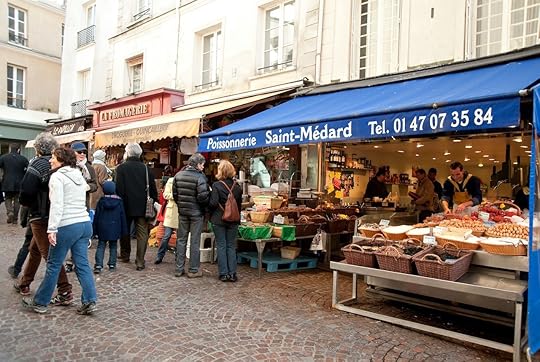
Photo: Obs70/Shutterstock
Rue Mouffetard, in the heart of Paris’ Latin Quarter, is a living piece of the city’s history. Dating back to the 12th century, the street is a remnant of an old Roman road, and even today has a distinctly medieval feel. The market on Rue Mouffetard is among the city’s most popular, filling with shoppers every morning. Restaurants along the cobbled road offer a mix of Parisian and ethnic cuisine, and you could easily spend the entire day getting lost amid the colorful bazaars and shops. The family of French writer Denis Diderot lived on Rue Mouffetard in the late 1700s, and the street has been mentioned in literary works such as Ernest Hemingway’s The Sun Also Rises.
3. Qianmen Street — Beijing, China
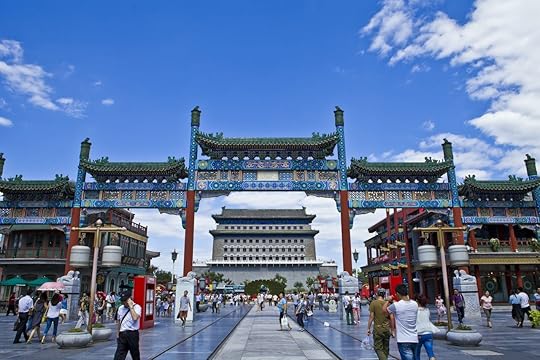
Photo: maoyunping/Shutterstock
Running a half-mile from the Archery Tower of Qianmen in the north to Tiantan Park in the south, Qianmen Street is one of Beijing’s most famous thoroughfares. The street dates back over 570 years to the Ming and Qing dynasties. Originally called Zhengyangmen Street — the name was changed in 1965 — its architectural style recalls the days of the Qing dynasty in the 17th century. Now, the street is an eclectic blend of old and new. Once home to workshops, warehouses, and theaters, the street was renovated before the Beijing Olympics in 2008, and is now a popular nightlife destination. The Quanjude restaurant, a Beijing institution since 1864, is located on Qianmen Street, along with the famous Lao She Teahouse.
4. Third Street Promenade — Los Angeles, California, USA

Photo: Tero Vesalainen/Shutterstock
Not exactly as historically inspiring as Rue Mouffetard, the Third Street Promenade in Los Angeles is the quintessential representation of the city itself. Located just two blocks from the iconic Santa Monica Pier, the pedestrian boulevard stretches for three blocks, and is packed with restaurants, stores, and performers. And the street isn’t just any outdoor strip mall. Lined with trees on either side, fountains and pools in the midway, and with a view of palm trees all around, there’s no mistaking that Third Street Promenade is a classic California experience. While the street has been central to Santa Monica’s business district since the 1800s, it has only existed in its pedestrianized form since the 1960s.
5. Strøget — Copenhagen, Denmark
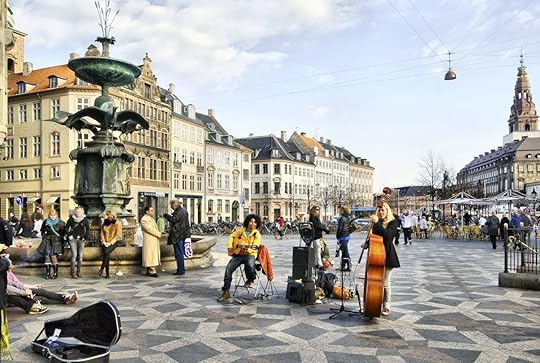
Photo: Telia/Shutterstock
One of the longest pedestrian streets in the world, Strøget stretches 0.7 miles through the heart of Copenhagen. Vehicle-free since 1962, Strøget is known as a major shopping thoroughfare that’s immensely popular with both visitors and locals. The street runs through Copenhagen’s old town, making it one of the city’s most important, high-profile, and heavily trafficked streets. When Strøget was pedestrianized in 1962, it marked an important shift in Danish urban culture, from a focus on vehicular transportation to more pedestrian- and bike-friendly roads. Many cities around the world have used Copenhagen — and Strøget — as a blueprint for similar urban transitions.
6. Rue du Petit-Champlain — Quebec City, Canada

Photo: izikMD/Shutterstock
If you’re craving a European pedestrian street but find yourself on the wrong side of the Atlantic, Quebec City is the answer. This 17th-century city is North America’s version of the Old World, and the Rue du Petit-Champlain is a big part of that. Named after Samuel de Champlain, who founded Quebec City in 1608, this street in Quebec City’s old town was North America’s first commercial district. It might be due to the architecture, or it might be because everyone is speaking French, but walking down this street truly feels like you’ve stepped into 17th-century Paris.
To get there, descent the Breakneck Stairs, the city’s oldest stairway, built in 1635 and named for its almost nerve-wracking steepness. Apart from the local craft shops and galleries, you’ll want to check out the street’s famous mural. Painted on the side of a house at 102 Rue du Petit-Champlain, the mural colorfully depicts the neighborhood’s history, including the bombardments of 1759, landslides of 1889, and a fire in 1682.
7. La Rambla — Barcelona, Spain

Photo: Valeri Potapova/Shutterstock
Perhaps Europe’s most famous pedestrian street, Barcelona’s La Rambla is not actually a pedestrian street at all. Stretching about one mile from Plaça Catalunya to the water, La Rambla is actually more like a really massive median in between two single-lane roads. But that median is teeming with activity, and it provides access to the many narrow, cobblestoned, car-free lanes of the Raval area on one side and the Gothic Quarter on the other, which in turns bumps up against another pedestrian-friendly neighborhood, El Born.
On La Rambla itself are street performers and a few cafes, but the best thing to do is to get off La Rambla to explore the cool things that run alongside it, like the massive indoor market hall, La Boqueria, which is best visited early in the morning. Late morning, grab a coffee and a pastry at Escribà, which is worth a visit for the colorful, Gaudí-esque decor alone. In the afternoon, walk less than a minute off La Rambla to Bar Lobo for tapas-style snacks and a cold beer. 
More like thisArt + ArchitectureThe 9 most colorful neighborhoods in the world
The post 7 of the coolest pedestrian streets around the world appeared first on Matador Network.

US SC rules in favor of LGBTQ
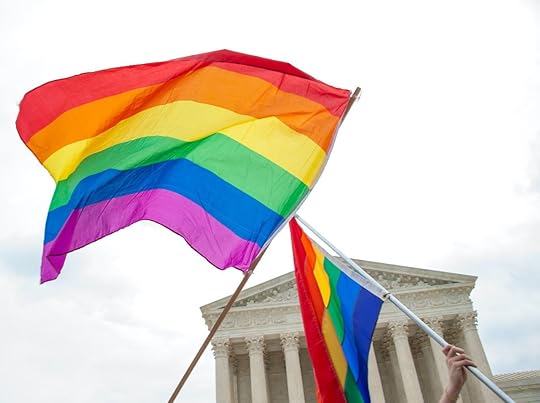
In a major win for LGBTQ civil rights, the United States Supreme Court has ruled that federal law prohibits workers disrcimination based on sexual orientation and gender identity. The ruling is a blow to the Trump administration, which argued that Title VII of the Civil Rights Act, which bans gender-based discrimination, does not apply to gender identity or sexual orientation.
The 6-3 majority opinion, written by Neil Gorsuch, says, “An employer who fires an individual for being homosexual or transgender fires that person for traits or actions it would not have questioned in members of a different sex. Sex plays a necessary and undisguisable role in the decision, exactly what Title VII forbids. There is simply no escaping the role intent plays here: Just as sex is necessarily a but-for cause when an employer discriminates against homosexual or transgender employees, an employer who discriminates on these grounds inescapably intends to rely on sex in its decisionmaking.”
Brett Kavanaugh, one of the dissenting judges, wrote, “Under the Constitution’s separation of powers, however, I believe that it was Congress’s role, not this Court’s, to amend Title VII. I therefore must respectfully dissent from the Court’s judgment”
According to Steve Vladeck, CNN Supreme Court analyst, “Today’s decision is one of the court’s most significant rulings ever with respect to the civil rights of gay and transgender individuals.” 
More like thisSki the Powder Highway in British Columbia, Canada
The post LGBTQ workers are protected against discrimination, rules US Supreme Court appeared first on Matador Network.

How to access airport lounges

Airport lounges provide a temporary escape from the madness of connecting flights and busy terminals, making for a great place to catch up on emails while letting a glass of wine take the edge off a hectic day. Long thought of as a haven for business travelers and the wealthy, the increasing affordability of air travel combined with the proliferation of travel-focused credit cards has made airport lounges more accessible to the general public. At somewhere between $35 and $65, a single-use lounge pass still costs more than it’s worth, but there’s no need to ever buy one. It’s easier than ever to step up your next airport experience, with a complimentary newspaper and a glass of wine in hand.
1. Visit your smartphone’s app store.

Photo: Apple App Store
Before booking any further travel, open the app store and download two apps straightaway: LoungeBuddy and Priority Pass. The former lists and sells passes to nearly every lounge worth visiting worldwide, frequently at a discount (entries often start at $27 but can be as low as $10). The latter app is a membership program that provides complimentary lounge access at more than 1,200 lounges both in the US and abroad (don’t worry, you don’t even need to buy the membership).
2. Apply for a high-end travel rewards credit card.
The next step is to put some plastic in your wallet and use said plastic to get into lounges for free using Priority Pass or LoungeBuddy. While many balk at the annual fee attached to most high-end travel rewards credit cards, airport lounge access is among the best ways you can offset that cost while making your travels more comfortable. The Chase Sapphire Reserve card, for example, comes with free Priority Pass Plus membership, which allows for 10 single-use passes per year. These include many locations from lounge brands Plaza Premium and SkyTeam, but few airline-affiliated lounges. Given that a Plaza Premium pass runs between $35 and $65, frequent fliers can easily offset some or even all of the card’s $450 annual fee, also saving themselves from buying overpriced food and drink inside the terminal.
Other top credit cards for Priority Pass membership include the Platinum Card from American Express, whose $550 annual fee puts you inside the luxe Centurion lounges, Delta Sky Club (if flying Delta), as well as those available with Priority Pass Plus. The Ritz Carlton Rewards credit card offers Priority Pass Plus membership and a $300 travel credit usable toward additional lounge purchases. When considering applying for a credit card, check its “perks” before submitting your application — any travel rewards card with an annual fee of $450 or more isn’t worth it without complimentary lounge access. The American Express Green card provides $100 per year in statement credit for LoungeBuddy purchases, enough for at least two or three visits.
3. Rack up those airline miles.

Photo: NextNewMedia/Shutterstock
Low-tier airline-specific credit cards typically offer a limited number of lounge passes per year to its lounges. United MileagePlus cardholders receive two annual passes to the United Club as part of the card’s $95 annual fee, enough to offset that cost, with the same true for other top-tier airlines. Should you need — or want — more than two passes, there are two options. The first is to simply upgrade to the airline’s top-tier card, which like those noted above, is likely to include 10 or in some cases unlimited access, but with a higher annual fee.
The second is to fly with legacy airlines and horde miles like your life depends on it. Elite status holders with United, American, and Delta, among others, all receive lounge access for the calendar year in which their elite status is valid. For frequent travelers, the best practice for earning elite status is to identify an airline that best services your specific travel needs, and apply for one of its rewards credit cards. If your home airport is a “hub” for an airline, meaning it is a starting point for a wide range of flight routes, that airline is often the best option. Alternatively, if your company frequently flies you on a certain airline or your family often uses an airline, that airline’s credit card may best suit you. With the card, you’ll collect miles both when flying and when making purchases, each time getting closer to elite status and all the perks therewithin.
What to expect in an airport lounge
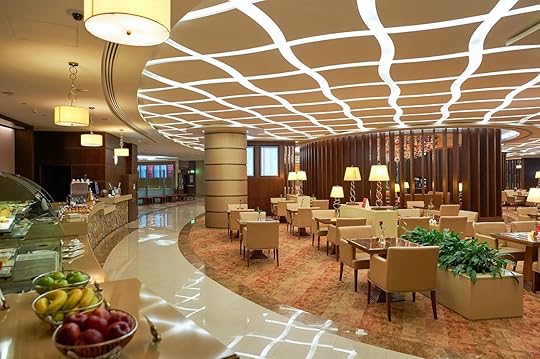
Photo: Sorbis/Shutterstock
You’ll still see plenty of suit-and-tie clad business travelers in the lounge, but it’s not expected that you be one of them. Unless stated otherwise on the lounge’s website or at reception, dress codes are “smart casual,” meaning no flip-flops or pajamas, no offensive messages, and a general vibe that you’ve considered your appearance for a mature, indoor setting — men in tank tops may be asked to change, for example. Your pass is likely time-limited to somewhere between two and four hours, so don’t plan to hang out all day. Use that time to eat, catch up on things, nap, and if you’re straight off of a red-eye, take a quick shower.
Alcoholic drinks including beer, wine, and some spirits are typically included with admission, but keep in mind many lounge patrons are traveling on business or with children and it’s not appropriate to treat this as an “open bar” policy. Staff will be quick to cut off those approaching intoxication. The same goes for noise. The general atmosphere in an airport lounge falls somewhere between a library and a co-working space — general conversation is fine at a reasonable volume, but longer phone and conference calls should be taken in designated call booths or stalls.
Where you can indulge, however, is at the buffet. While far from what’s found at a Vegas casino (Centurion lounges notwithstanding), lounge buffets feature light options such as finger sandwiches, wraps, and soups, along with cheese and cracker trays or salads. In the morning, expect a hot breakfast with eggs, bacon or sausage, and fresh fruit. Eat a full meal and if granola bars or pretzels are offered, your in-flight snack is taken care of as well. 
More like thisTravelSign up for these programs to make travel easier in 2020
The post Airport lounges aren’t just for rich business travelers. Get in cheap with these tricks. appeared first on Matador Network.

June 12, 2020
A guide to virtual Pride NYC

On April 20, 2020, Heritage Pride and the City of New York announced that the NYC Pride parade was canceled for the first time in its 50-year history. The decision was made to protect the safety and wellbeing of the community in the midst of the COVID-19 pandemic. While this means the way we celebrate Pride this year will shift, it does not mean that Pride is canceled altogether.
NYC Pride 2020 will be a new experience with virtual events broadcasted via social media and televised shows. The essence of Pride will not be lost, and the reimagination of the event will in no way diminish the importance of coming together and supporting the community.
“New York City is the birthplace of the modern LGBTQ rights movement. We’ve come a long way since the first Christopher Street Liberation Day March 50 years ago, which is a testament to the bravery and resiliency of LGBTIA+ New Yorkers in the struggle for equality,” Mayor Bill de Blasio said on April 20. “While this pandemic prevents us from coming together to march, it will in no way stop us from celebrating the indelible contributions that the LGBTIA+ community has made to New York City or from recommitting ourselves to the fight for equal rights.”
The move to make NYC Pride virtual was not an easy decision. The event is a haven for the LGBTQ+ community and supports businesses — a top priority, especially during this time of financial uncertainty and unprecedented challenges. In a statement, David A. Correa, interim executive director of Heritage of Pride, shared, “We may not fill the streets of New York City this year, but LGBTQIA+ people carry pride with them all year long. I have no doubt that we will be together again soon.”
With that in mind, here’s how you can still celebrate Pride in NYC this year and back local organizations and businesses that need your support now more than ever.
Criminal Queerness Festival 2020
When: June 9-29
Where: The full schedule of listings can be found here. All events are held on Zoom, Facebook, and Youtube.
Criminal Queerness Festival provides a platform for writers, artists, and activists who bring to stage stories from the queer community. Shining a light on issues that are often sidelined, NYC Pride is promoting this event brought to us by the National Queer Theater and Dixon Place in alliance with the Mayor’s Office of Immigrant Affairs. With workshops, panels, readings, and online cocktail parties, this year’s theatrical event promises a wide range of entertainment and education.
Here are some of the highlights:
Queer and Disabled: Examining the imagination — Brought to us by Christopher “Unpezverde” Núñez, a visually impaired choreographer and artist, this dance and movement workshop aims to reimagine the queer body through a sensory experience. All are welcome, and no previous dance experience is required.
When: Wednesday, June 17, 2:00 PM ET
Performance of She He Me — This production is the first Arab transgender play and focuses on the true stories of three people who have challenged gender norms and fought for equitable treatment.
When: Sunday, June 21, 4:00 PM ET
Maid in America — This short film was produced by Migguel Anggelo, who is a Venezuelan-born and Brooklyn-based artist. It explores the blend of Latino, queer, and immigrant identities.
When: Sunday, June 28, 7:00 PM ET
Black Queer Town Hall
When: June 19-21, 6:30-8:00 PM ET
Where: Facebook
Replacing Drag Fest, this event is supported by GLAAD and NYC Pride and is produced by The Only Productions. With performances, roundtable discussions, and fundraising opportunities for #BlackLivesMatter, Black LGBTQ organizations, and local Black LGBTQ drag performers, this event is the largest digital drag festival during this year’s Pride. More than 100 performers are scheduled to perform daily from 6:30-8:00 PM ET, and the festivities will stream on NYC Pride and GLAAD’s Facebook pages. Venmo profiles and donation platforms will be clearly displayed during the drag performer’s scheduled time and contributions are encouraged.
Runstreet virtual Pride 5k art run
When: June 20-28
Where: Anywhere in NYC
Don your rainbow running gear for a solo 5k around the neighborhood. A portion of ticket sales for Runstreet will benefit the Callen-Lorde LGBTQ Community Center, which is a global leader in LGBTQ healthcare. Be sure to tag your running selfie with @Runstreet to enter the photo contest.
Savor Pride
When: TBA
Savor Pride is this year’s culinary event, and it will benefit God’s Love We Deliver, which donates nutritious, high-quality food to people living with HIV/AIDS, cancer, and other serious illnesses. It’s being held outdoors and brings together LGBTQ+ and ally chefs with an exciting menu, demonstrations, and discussions.
Garden Party
When: June 22, 6:00 PM ET
Where: Online
The LGBT Community Center of New York City is going virtual with its Garden Party this year and encouraging us to hold our own soiree. The virtual event will have inspirational food and cocktail/mocktail menus and a suggested playlist, as well as performances, stories, special guests. You can register for the event here.
The Rally
When: June 26 from 5:00-8:00 PM ET
Where: Live on Facebook, YouTube @NYCPride
In partnership with GLAAD and the National LGBTQ Task Force, NYC Pride is leading The Rally, which is presented by journalist Ashlee Marie Preston and actor Brian Michael Smith. Streaming on Facebook and YouTube the virtual event will give a stage to speakers, such as Ceyenne Doroshow, Annie Segarra, Edafe Okporo, Leandro E. Rodriguez Ramos, and many more who will take a stand against police brutality and discrimination.
Sharing with NYC Pride, Ashlee Marie Preston stated, “The current socio-political climate around LGBTQ rights is similar to that of the 1960s; but our commitment to shattering systemic barriers that impede our ability to thrive is exactly the same as it was for our foremothers — Marsha P. Johnson and Sylvia Rivera. Poisonous policies, patriarchal power, nor the pandemonium of a pandemic will thwart our progress. I’m constantly reminded by the indomitable Miss Major Griffin-Gracy that after the dust settles, we will still be here!”
The event will also showcase performances by the likes of Michael Blume. You can register now for the Rally here.
NYC Pride Special Broadcast Event
When: Sunday, June 28, 12:00-2:00 PM
Where: ABC, check your local listing
Celebrate the 50th anniversary of the first Pride March held in 1970. NYC Pride invites you to dial into a very special broadcast that will showcase a huge range of stories of unity and strength from the LGBTQ+ community. Being one of the country’s largest digital celebrations, Carson Kressley and WABC7 anchors Ken Rosato and Lauren Glassberg will host with correspondents Sam Champion and Kemberly Richardson helping in the field. We’ll also be treated to Dan Levy, who will be acting as one of the many grand marshalls, and performances by Janelle Monae, Billy Porter, Deborah Cox, and more.
How you can support and donate
Outside of directly supporting local LGBTQ+ businesses, there are a few organizations that you can donate to and help. For more information on programs and fundraising specifically related to COVID-19 and the LGBTQ+ community here’s a good resource.
The Ali Forney Center — “Our mission is to protect LGBTQ youths from the harms of homelessness and empower them with the tools needed to live independently.”
The Audre Lorde Project — “The Audre Lorde Project is a Lesbian, Gay, Bisexual, Two Spirit, Trans and Gender Non Conforming People of Color center for community organizing, focusing on the New York City area.”
Black Trans Advocacy Coalition — “The Black Trans Advocacy Coalition (BTAC) is the only national organization led by black trans people to collectively address the inequities faced in the black transgender human experience.”
Emergency Release Fund — “The mission of the Emergency Release Fund is to ensure that no trans person at risk in New York City jails remains in detention before trial.”
GMHC — “GMHC fights to end the AIDS epidemic and uplift the lives of all affected.”
Immigration Equality — “Through direct legal services, policy advocacy, and impact litigation, we advocate for immigrants and families facing discrimination based on their sexual orientation, gender identity, or HIV status.”
LGBTQ Fund — “The Freedom Fund secures the liberty and safety of people held in jail or immigration detention, focusing on LGBTQ individuals.”
Marsha P. Johnson Institute COVID-19 Relief Fund — “Our goal is to raise enough money to provide 100 Black trans people in need with $500 no strings attached to support their needs.”
National Centre for Transgender Equality — “The National Center for Transgender Equality advocates to change policies and society to increase understanding and acceptance of transgender people.”
NYC Pride — “Your donation will support annual programming and events that help inspire, educate, commemorate and celebrate our diverse community.”
Point of Pride — “Point of Pride works to benefit trans people in need through gender-affirming support programs that empower them to live more authentically.”
Prism Foundation — “Prism Foundation is a grassroots philanthropic organization that provides funds and leverages resources to empower the Asian & Pacific Islander LGBTQ+ community.”
SAGE — “We’re a national advocacy and services organization that’s been looking out for LGBT elders since 1978. We build welcoming communities and keep our issues in the national conversation to ensure a fulfilling future for all LGBT people.”
The Sylvia Rivera Law Project — “We seek to increase the political voice and visibility of low-income people and people of color who are transgender, intersex, or gender non-conforming. SRLP works to improve access to respectful and affirming social, health, and legal services for our communities.”
TRANScend — “TRANScend Community Impact Fund will address the disproportionate impact of HIV within Transgender communities with a specific focus on supporting grassroots organizations.”
Trevor Project — “It’s especially important to support LGBTQ young people during Pride, because many are isolated from welcoming communities and resources, and sometimes struggle to feel Pride in who they are.” 
More like thisLGBTQ TravelGlobal Pride 2020 going virtual is a lesson in making Pride accessible for everyone
The post How to celebrate Pride in NYC in 2020 appeared first on Matador Network.

Anti-racism protest in Germany

Protests sparked by the murder of George Floyd haven’t just been contained to the United States. This weekend, what is believed to be the largest turnout of Black Lives Matter protesters outside of the US took place in Germany. Over 15,000 protesters gathered in Alexanderplatz, in Berlin’s city center, in acknowledgment that racial discrimination and police brutality against people of color isn’t just an American issue. They held signs like “Germany is not innocent” and held a moment of silence for eight minutes and 46 seconds — the amount of time police officer Derek Chauvin kneeled on George Floyd’s neck.
This today in #Berlin So moved by how the world is coming together. #BlackLivesMatter #Unity #Humanity
Matador Network's Blog
- Matador Network's profile
- 6 followers



